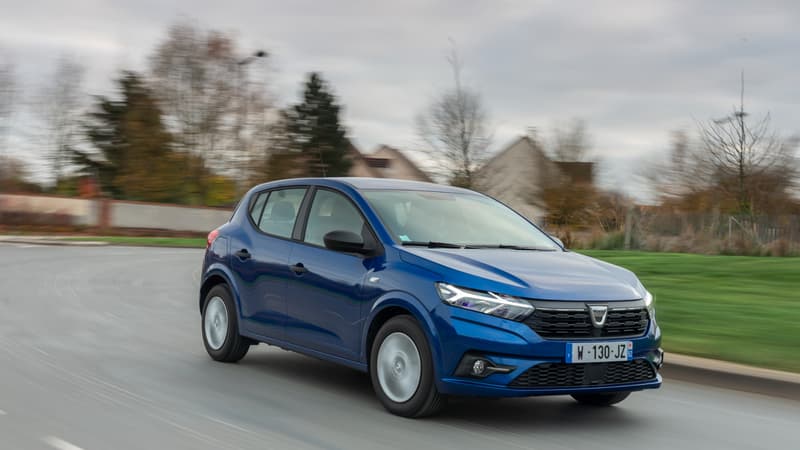In a seized European car market in 2022, Dacia’s performance does not go unnoticed. The Renault group brand saw its sales grow by 6.8% last year, reaching 573,800 units (almost 36,700 additional cars sold). Its market share also increased in Europe by 15%.
“It’s been a very satisfying year,” said Xavier Martinet, Dacia’s director of sales and operations marketing.
The four models of the brand have stood out in the European market, the main one for Dacia, specifically the Sandero, the best-selling car in Europe to individuals in 2022. The compact confirms its success as it retains its first position on the podium since 2017. Just behind him in the ranking of the best-selling cars in 2022, we find the Dacia Duster, which is also at the top of sales in the SUV segment, and has been since 2018.
Dacia less affected by the semiconductor crisis
“All our models have performed well in 2022”, confirms Xavier Martinet. This success is explained by the positioning of Dacia, “which knew how to find the right quality/price ratio last year,” explains the brand’s marketing director. Dacia was also less affected by the semiconductor shortage that penalizes both its competitors and its parent company Renault. “Our cars are less sophisticated, with less technological equipment, which is why we suffer less than the others,” acknowledged Xavier Martinet.
Based on its results, Dacia looks to the future and to 2023 with confidence, although there are still clouds on the horizon, just like 2022, with still some semiconductor shortage issues and predictable logistical difficulties. But the central issue this year will be demand, explains Dacia, with inflation still high and interest rates rising. The brand, like most other automakers, saw its prices rise in 2022.
Dacia’s industrial efficiency
“Can this policy of price rises continue?” asks Xavier Martinet.
“One of our competitors (Tesla) has made strong announcements about prices, we will have to see how the other players in the sector respond,” continues Dacia’s marketing director, who insists that Dacia will continue in the future to maintain affordable prices for its customers, which has made it successful. A parameter made possible in particular thanks to the “industrial efficiency” of the brand, which produces its vehicles in Romania and Morocco.
Conquering segment C
Remaining unbeatable in prices despite the fact that demand could weaken is one of the challenges that Dacia faces for the future. The coming years will also be placed under the stamp of the conquest of the brand of the Renault group. “We don’t want to gain new geographic markets, we want to focus on Europe and the Mediterranean basin,” insisted Xavier Martinet.
“Our goal today is to conquer the C segment market,” he said.
The segment is the midsize family car, the flagship segment of automobile consumption. To go on the offensive in this category, Dacia is betting in particular on the “Bigster”, a large 7-seater SUV that should be on the market in 2025. Two other new models, the SUVs, will also see the light of day in the years. to come. . “We are working on it,” said Xavier Martinet without going into details.
The idea, with this conquest of the C segment, is also to increase the margins of the brand. Already above 10%, the goal, as announced by Luca de Meo, CEO of Renault last November, is to reach 15% in 2030. A way for Dacia to continue monopolizing the top positions on the car podium.
Source: BFM TV


